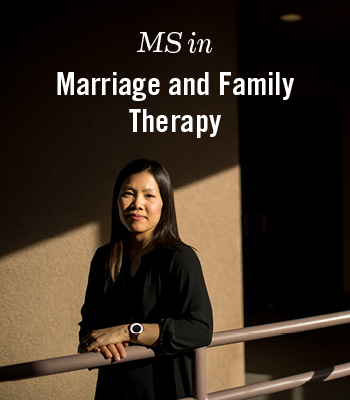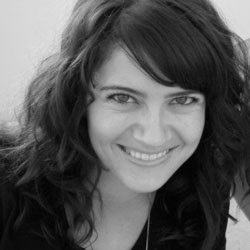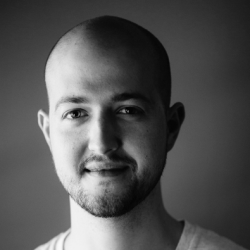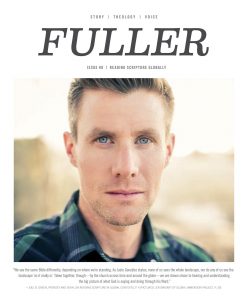
When Jessica ChenFeng (MFT ’07) arrived at Fuller as one of only a handful of Asian Americans in her Marriage and Family Therapy cohort, she noticed that she never felt at ease in spaces where she was the only Asian person. “I was my fullest self with people I was comfortable with culturally, and I didn’t like that,” she recalls. She grew up in a Taiwanese American family and a mostly Asian community, and didn’t realize how embedded she was in her own culture and context until she was diving into marriage and family therapy, a primarily white-dominated field.
She noticed that her Asian identity was rarely addressed, and she didn’t learn how to practice therapy out of her own cultural identity. “A lot of the theories are written by white men, and the way marriage and family therapy is practiced is also from a Eurocentric ideology,” she explains, and then jokes, “I was a really good pretend white therapist, and I didn’t know it.”
Before coming to Fuller, Jessica says she had never been exposed to Christianity outside of a Taiwanese context. “I didn’t have a conscious awareness of how culture and faith come together, but I remember experiencing a lot of grace at Fuller,” she says. She also experienced professors modeling humility and curiosity. Jessica recalls Old Testament professor John Goldingay, while answering a student’s question in a Bible course, saying, “The more and more I study it, the less I understand it.” That was revolutionary for Jessica. “It was so refreshing to me,” she says, “because it connected to this thing in me that knew there must be a humility or not-knowing about God—how can we presume that what we know is always right?”
Jessica’s willingness to be humble led her to want to learn about others’ worldviews and how they came to construct them. But first, she needed to learn about her own. While working on her PhD at Loma Linda University, Jessica came across literature on the “intersectionality of social identity,” and, she says, “it clicked immediately. It gave words and language to my life experience.” She focused her doctoral work on social location—how one’s gender, culture, race, and class, among other factors, all play a part in one’s understanding of and interaction with the world. Jessica began to develop a “critical consciousness,” which helped her when she encountered discrimination in her own life or misunderstandings based on stereotyping. “When things like that happen to me now, I have a different lens,” she says. “It doesn’t disempower me. I’m conscious of why that happens, and I have places where I can process that, so I don’t have to react. It doesn’t take away from me anymore.”
One arena Jessica mentions that highlighted the effects of social location, both for herself and others, was last year’s US presidential race. She observed that, whatever candidate they supported, many found themselves interacting online in social media echo chambers, attending churches that reinforced their opinions, and socializing with friends whose beliefs matched their own.
“What hurt the most and felt personally threatening,” says Jessica, “were the people we assumed were ‘like us’—family members, people who share similar social identities to ours—who we began to perceive as ‘the other.’” Yet understanding the perspectives of those “others,” she insists, must start with understanding our own: critically examining ourselves and the influences that have built our own identity and belief system.
Jessica tells of one family member—another Taiwanese American Christian woman—whose experience and political response illustrate both the complexities and constraints of cultural embeddedness. “She has many identities,” Jessica describes: “one being marginalized as an Asian woman who had to immigrate to the United States and learn English, and at the same time feeling that she and her family worked hard to get an education and citizenship in legal ways.” The news articles this family member reads and the people who inform her thinking, Jessica perceives, all reinforce her particular beliefs. “She is genuinely living out her strongest convictions, but has no access to those with other worldviews that might influence her own.” It’s a too-common situation, says Jessica, in which insulation from one another’s stories can perpetuate disconnection.
 For Jessica, curiosity about others’ stories is one of the key pieces in becoming conscious of one’s own context and thus free to reach across the divide to the “other.” She shares about how one of her closest friends, who is white, Christian, and identifies as queer, is very different from her yet one of her most trusted friends—a person she feels really “gets” her. Such trust and closeness came “after years of diving deep into our relationship,” says Jessica, and working to understand each other’s experiences and contexts. “I grew up in a conservative Christian environment, thinking certain things about gay people, and my friend didn’t always understand my Asian experience, so we’ve talked a lot about it,” says Jessica. “And that’s the depth of our connection.” It’s a connection Jessica feels is deeper than one that grows from simply sharing the same cultural background, because “having the same experiences doesn’t mean we’re connecting at this deeper level where healing happening.”
For Jessica, curiosity about others’ stories is one of the key pieces in becoming conscious of one’s own context and thus free to reach across the divide to the “other.” She shares about how one of her closest friends, who is white, Christian, and identifies as queer, is very different from her yet one of her most trusted friends—a person she feels really “gets” her. Such trust and closeness came “after years of diving deep into our relationship,” says Jessica, and working to understand each other’s experiences and contexts. “I grew up in a conservative Christian environment, thinking certain things about gay people, and my friend didn’t always understand my Asian experience, so we’ve talked a lot about it,” says Jessica. “And that’s the depth of our connection.” It’s a connection Jessica feels is deeper than one that grows from simply sharing the same cultural background, because “having the same experiences doesn’t mean we’re connecting at this deeper level where healing happening.”
On a larger scale, Jessica helps her students learn to engage in this kind of consciousness and connecting in the diversity class she regularly teaches as assistant professor in the marriage and family therapy program at California State University, Northridge. In classes like this one, Jessica explains, the goal used to be spoken of in terms of “cultural competence.” But now, more people are becoming aware that one cannot be “competent” in other cultures because those cultures are always changing. “Traditionally, cultural competence was based on a tourism model,” she says, with lessons that tended to box up other cultures: “These are Asian Americans, these are black Americans, these are what Latinos are like.” Because cultures are alive and ever changing, Jessica says her goal is to teach her students “cultural humility” instead of cultural competence. “That term indicates that I can never be ‘competent’ in fully understanding any cultural person, even myself—that I’m always growing,” she says.
This includes coming to terms with one’s own story of marginalization, oppression, and privilege. It’s usually most difficult for students to talk about the parts of their identity that are identified as privileged, Jessica notes. “People feel guilty about it, or ashamed, because for some reason our culture has socialized us to believe white privilege is a terrible thing,” she says. “Most people are more ready to talk about their oppressed identities, but we can often get stuck there.” To help get unstuck from the “dehumanizing language” of oppression and privilege, as Jessica believes it to be, she first focuses on historical context—why and how the social hierarchies in America came to be. “Why was ‘the other’ so bad? Every immigrant group, all of our xenophobia, all of our history—that’s the same story,” Jessica says. By embedding privilege and oppression in historical context, she helps her students to stop personalizing it, going from “I’m bad” to “No, our history makes it so that we had no other way to live in this societal structure.”
Teaching the diversity class over the years, Jessica has noticed that as she walks alongside her students through their shared “consciousness-raising,” she watches them first emerge out of an “ignorance is bliss” state. As they start to understand other people’s behaviors and their own, sometimes it feels more frustrating. “A lot of people, for a season, become angry; they’re discouraged, they feel hopeless about their experience,” explains Jessica. “But if you persist in it, I believe that you do connect more with yourself, you understand the world better, you build coping mechanisms, you learn how to be empowered.”
Today, in a climate that too often feels divided, Jessica believes the challenge we are faced with is answering the question, “What does it mean to be in community and to be in unity as the body of Christ?”
“We have to advocate for processes that allow for everyone to be heard and to emphasize that trying to make people arrive at a conclusion of “X” or “Y” is not necessarily the primary agenda,” says Jessica. “I think for a lot of people, this is scary and risky because it’s so personal.”
“A million little pieces” go into shaping our unique story, perspectives, and worldview, says Jessica. If we want our relationships with others to be both meaningful and authentic, we need to deconstruct and understand those pieces. Taking a clear-eyed look at that embedded identity in ourselves, Jessica believes, will help us be more open to the complexities of the “other”—and cultivate the cultural humility that can bridge divides.




